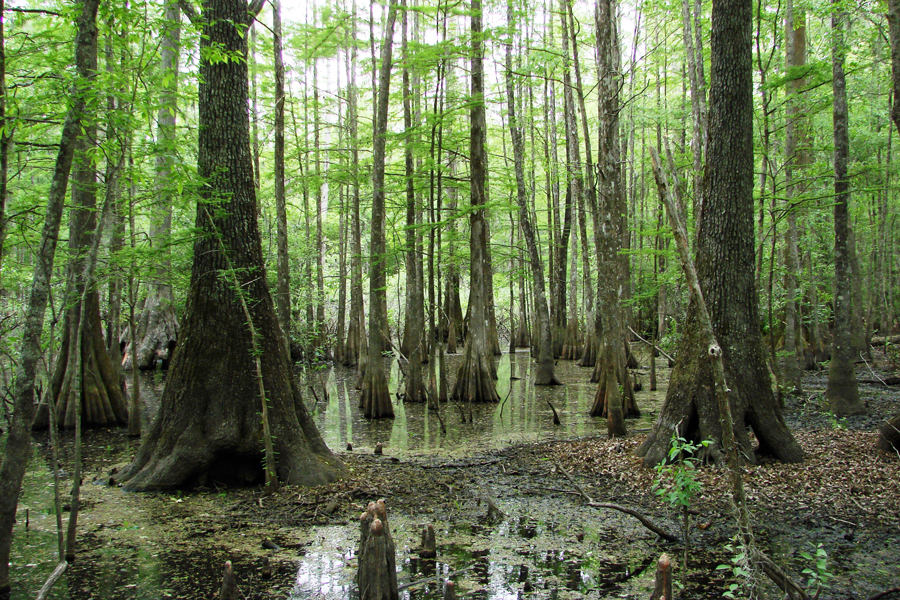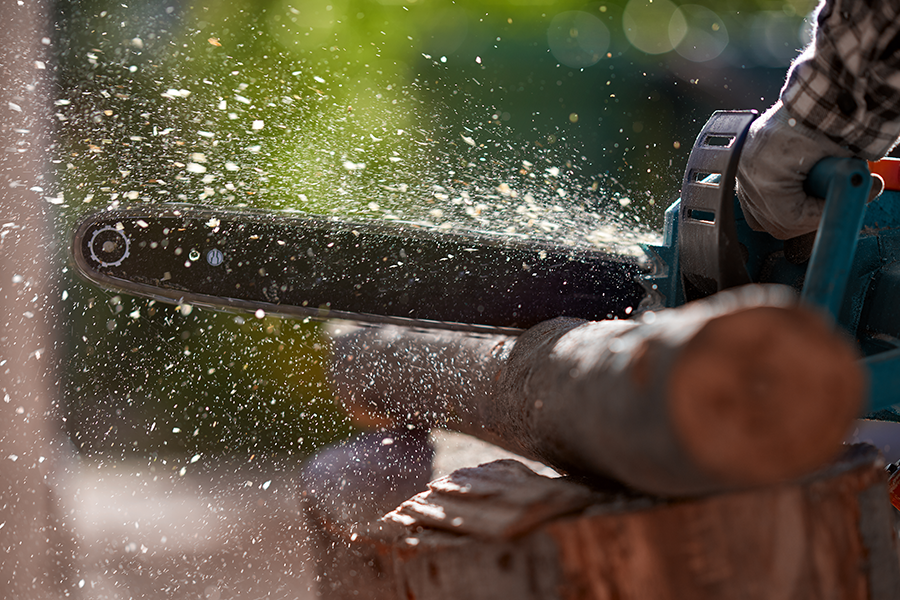Forestry
-

Many people view wetlands as “wastelands,” having few virtues. But it is now known that wetlands provide many useful services, from improving water quality to providing habitat for important fish and wildlife. These kinds of benefits would be costly to create, so maintaining natural wetlands is good for both the economy and the environment. Many smaller wetlands occur in Georgia farmlands, and many of the values provided by wetlands benefit Georgia farmers. This bulletin highlights the key virtues of wetlands to agriculture, describing how wetlands associated with Georgia farms can contribute to agricultural value.
Darold P Batzer, Ashfaq A. Sial, Jason Schmidt, and Gabriela A Cardona-Rivera
|
-

Accidents are common when felling a tree with a chainsaw. Fortunately, most of them can be prevented. Tips for preventing kickback, barber chair, entanglement, setback, and stump jump are presented in this publication, along with techniques for safely releasing spring poles.
Glen C. Rains, Ellen M. Bauske, and Anne Randle
|
-

Bill Pickens, Conifer Silviculturist,
North Carolina Forest Service
Shortleaf pine and its associated plant communities evolved with fire of varied temperatures, or mixed severity, and a fire return interval, or frequency of 2–18 years. Periodic occurrences of fire provide shortleaf a growth advantage; a competitive edge that allows it to both establish and maintain a place in the canopy. Without fire, hardwoods and loblolly or Virginia pines out-compete shortleaf. Across its wide range, shortleaf is found growing with blackjack, white, and post oaks; trees that have similar adaptive traits and fire resistance. The high diversity and number of herbaceous understory plants and wildlife found in shortleaf savannahs and woodlands is sustained with frequent prescribed burns. The frequency, intensity, and time of year of a burn all influence how fire shapes a shortleaf forest. Due to its reliance on fire, foresters and ecologists commonly refer to shortleaf as fire resistant, fire resilient, fire dependent, or fire adapted. However, shortleaf pine is not fire-proof. And while fire provides many benefits there are risks. Some trees, particular seedlings and saplings will be damaged or destroyed from fire. Land managers must base the decision to burn on their overall management goals.Brent Peterson
|
-

Patrick Keyser, University of Tennessee, Center for Native Grasslands Management
Savannahs are typically thought of as transitional landscapes between forest and prairie, containing a sparse overstory and well-developed herbaceous understory, including grasses, wildflowers, and occasional understory shrubs. A similar concept is a woodland, which is a transitional landscape between savannahs and forests. In woodlands, overstory density is typically greater and understories are not as well-developed and may contain more woody plants than what is typical of savannahs. The open-forest canopy and rich understory vegetation of both communities were historically maintained by frequent, low-intensity fires. Although savannahs and woodlands were once widely distributed across much of the Eastern U.S., they are now rare due to fire exclusion, land clearing, and natural succession. Many plant and animal species associated with forests, forest edges, and open prairies thrive in these communities making savannahs and woodlands some of the richest and most diverse natural communities in the region. They provide excellent habitat for northern bobwhite quail, eastern wild turkeys, and in many cases, white-tailed deer.
Brent Peterson
|
-

C 1135
Silvics of Shortleaf Pine
Bill Pickens, Conifer Silviculturist, North Carolina Forest Service
Shortleaf pine, Pinus echinata, is the most widely distributed, but perhaps least understood of the four major southern yellow pines. Growing in 22 states from southern New York to eastern Texas, it occupies the largest range of any pine in the southeastern United States. Its extensive distribution reflects it adaptability to a great variety of soil, average annual temperatures (48–70-degree F), total precipitation (40–60 inches) and elevations (up to 3000 feet). Throughout much of its range, but especially in the East, it is a species of minor and varying occurrence often found growing with other pines and hardwoods. In Arkansas and Missouri, where it is the only naturally occurring pine, we find widespread areas of pure and mixed shortleaf-oak stands.
Brent Peterson
|
-

Linda Wang, National Timber Tax Specialist, Forest Service
Specific Federal income tax laws and rules apply to timber-related income and expenses. The tax tips provided in this bulletin are intended to assist timber owners, foresters, or loggers and their tax preparers in filing their 2017 tax returns. This material is for informational purposes only and is not intended to provide tax, legal, or accounting advice. Please consult your own tax, legal, and accounting advisors before engaging in any transaction. The information is current as of September 30, 2017.Brent Peterson
|
-

Linda Wang, National Timber Tax Specialist, USDA Forest Service
Timber or landscape trees destroyed by the hurricane, fire, earthquake, ice, hail, tornado, and other storms are “casualty losses” that may allow the property owners to take a deduction on their federal income tax returns. The key for most cases is to figure out the “adjusted basis” of the timber. The “Adjusted Basis” of Timber Generally, the cost or the measure of your investment in the property you own is the property’s basis. The original basis is defined as follows: 1) for purchased timber property, it is the purchase price and related costs (such as legal fee and timber cruises); 2) for gifted timber property, it is the donor’s adjusted basis in most instances; 3) for inherited timber property, it is the fair market value (or alternative value if so elected) on the date of death (or alternative valuation date). The “adjusted basis” of a property is the original basis reduced or added by adjustments over the term of ownership (e.g., new purchase increases your timber basis while timber sale decreases your timber basis).
Brent Peterson
|
-

Private forest owners control most of the southern forest resource and are critical to maintaining forest health in the South. Record droughts, rising temperatures, increased frequency and intensity of wildfires, insect and plant invasions, and more intense storm events all pose threats to the health of Southern forests. Scientists project that increases in temperature and changes in rainfall patterns will cause these disturbances to become more common, occurring with greater intensity or duration. This pamphlet reviews healthy forest strategies and approaches to decrease the risks associated with these disturbances on your forestland.
Brent Peterson
|
-

J. Holly Campbell and David R. Coyle, Southern Regional Extension Forestry
Littleleaf disease is a forest health concern for several pine species in the southeastern United States. This disease is a particular problem for shortleaf pine (Pinus echinata Mill.) and is one reason why this species is less widely planted compared with other pines. Littleleaf disease results from a combination of biological factors and site characteristics, when combined with a susceptible host tree. Some factors are more important – i.e., they have a primary role in disease formation – while others have a secondary role, and mostly contribute to making disease symptoms worse.
Brent Peterson
|